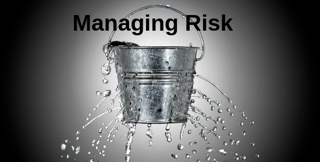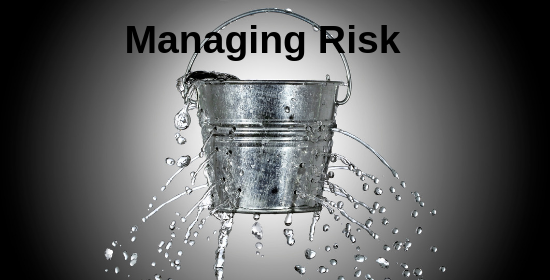

As a project manager, you are very familiar with risk. It is probably something that you deal with on a monthly or even weekly basis. Some of these project risks can be pretty easily controlled while others need more thought and planning to keep them from spiraling out of control. Either way, risk is something that should be a part of every project management plan. You will need to identify these potential risks and devise a plan to handle them.
Types of Project Management Risks
Risk management is about anticipating risks and having a plan in place that will resolve it when it occurs. Your goal should be reducing the negative effects on the project through proactive planning. Let's start by identifying the different types of project management risk.
- Change to strategy or project scope - This could be the result of someone on the team steering away from the original strategy or scope that was defined before the project even started.
- New stakeholders - A new stakeholder could enter the project before completion that has different ideas regarding project direction from what was originally outlined. Or, perhaps they understand and agree with the project in the current state, but they need to be caught up on all past and current activities before you can proceed.
- Quality - There could be an issue with the quality of the project deliverables not meeting standards and expectations.
- Cost - This one is pretty self explanatory. Are there parts of the project that could cost more than originally scoped? This could be things such as technology, people, or simply the project taking much longer than anticipated causing increases to cost.
- Timing - Could the project take longer than you're anticipating?
Ways To Handle Risks
Not all of the risks that you plan for will happen, but it's important to have a plan in place if they do arise. When it comes to handling risks, there are a few different options.
- Eliminate - The best thing to do with any risk is to avoid it. It won't hurt your project if you can prevent it from happening in the first place. Although this is ideal, it doesn't always happen this way.
- Mitigate - For those risks that can't be eliminated, you can mitigate them. You should take an action that will cause the risk to do as little damage as possible to your project.
- Transfer - In this case, you could transfer the risk to somebody else. For example, if technology limitations are posing a risk, you can outsource that part of the project. Keep in mind that sometimes transferring risk could also cause project costs to increase.
- Accept - You have to accept the risk when you can't eliminate, mitigate, or transfer it. You should have already exhausted all alternatives at this point and accepting the risk is all you can do.
Risk Management Plan
Once your project risks have been identified and you have determined how to handle these risks, it's important to record these in a risk management plan. A risk management plan is a document that a project manager prepares to foresee risks, estimate impacts, and define responses to issues. Determine who will be responsible for each identified risk, the management style, and the responsible party and lay all this out in your plan. Order these risks from the greatest probability of occurrence to the lowest probability.
This document should be shared with everyone on the project. Risk management plans should be updated periodically in order to evaluate whether or not identified risks are still applicable or if the risk level has changed overall based on the current project.
Even though projects inherently have risks, it doesn't mean that you still can't be successful. Having a clearly defined plan ahead of time will help project managers take control over these risks. While it may seem time consuming, the success of the project relies on your ability to accurately identify and address all potential risks. In the end, you and everyone on the project will be thankful to have this plan in place.
